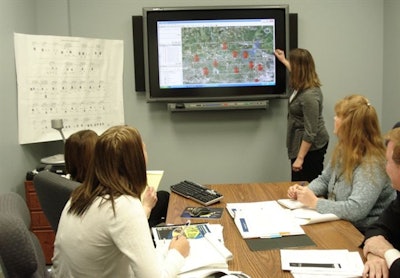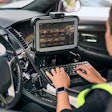 Photo courtesy of Sara Kronenberg.
Photo courtesy of Sara Kronenberg.
Confidential informants have always been an important source of information for law enforcement. Now those informants are taking on a new form.
Social media is a huge network of informants—and one you don't have to pay for. Criminals and their associates are posting videos, photos, status updates, and other things that provide info about crimes, or even place them at the scene of the crime. If they're going to volunteer this info about themselves, it's important for law enforcement to become familiar with the tools so they can mine this additional source.
Social media can also help law enforcement get a handle on fast-developing events. The ability to monitor Twitter hash tags or YouTube videos can help responders gain valuable insights prior to actually having feet on the ground.
A tornado, for example, results in chaos, as well as potential loss of life and property. It's imperative that emergency operations centers (EOCs) gain accurate information and data from the scene.
As with traditional investigations, police don't rely on one source of social media information to make an informed decision on a course of action. Officials monitor multiple channels to confirm events. This real-time information gives public officials situational awareness.
Social media technology has been used in business for some time now, but is still new territory to law enforcement and EOC personnel. It can't remain new for long.
Take a recent story in USA Today about Kansas. Gangs in that state are using social media for recruiting and organizing members, and sharing information. By monitoring social media, law enforcement can stay abreast of developments. One way to do so is with social media analytics, which can quickly analyze social media content to find relevant patterns and information.
This information then can be shared with the public, making them aware of dangerous situations, and protecting loved ones until situations are brought under control. For example, if there is a shooter on a college campus, it's not only the media's responsibility to inform, but also law enforcement and EOCs to issue alerts.
Take the case of Jared Loughner, the man who shot Arizona Congresswoman Gabrielle Giffords in January 2011. His anti-government rants appeared on social media sites prior to the actual assassination attempt.
Regardless of the importance of this private information to a criminal investigation, law enforcement must adhere to due process as dictated by state and federal law, and mandated by the Constitution.
Law enforcement or private security firms use technology to monitor public content to help identify individuals who pose veritable threats. This will allow them to prevent or disrupt a violent act or provide evidence in a criminal case.
Sentiment analysis technology now exists that can analyze thousands of posts around certain keywords, such as "anti-government" and return negative sentiment scores to identify individuals who pose real threats.
Perhaps someone is blowing off steam in making a threat. By analyzing information over a period of time, officials can narrow the 100,000 posts that may be classified as critical to the 5,000 that could pose real threats and need further analysis. They can assess whether sentiment is changing over a period of time, either reducing or increasing the concerns of law enforcement about a serious threat.
When activity reaches a certain overtly threatening level, such as the desire to "hunt down a judge," then the system can generate warnings to law enforcement analysts such as Secret Service agents in the case of federal officials or private security agencies in the case of executives, entertainers, or actors.
Such notifications would be sent to requisite organizations for further evaluation. Another advantage of such a system is that technology can monitor events without human interaction, but we have to remember that no action can take place without a thorough investigation.
If a threshold is reached, the responsible agency must determine the validity and seriousness of threats before any action can be taken. This could prevent something more sinister from occurring. A person could be suffering from mental illness, and law enforcement can secure help before the person crosses a criminal line. Does the person have a violent background? The official may be able to diffuse the situation by simply talking to the person, and letting him or her know that someone is actually listening.
The goal should never be to stifle free speech. Instead, it should be to disrupt violent actions before they occur. Social media analytics technology is available and it's becoming more than just a way to communicate—it's a way to communicate with informants. It's now up to law enforcement and first responders to make the most of it.
Lt. Dale Peet is a 23-year veteran of the Michigan State Police and the retired commander of the Michigan Intelligence Operations Center, Michigan's largest and primary fusion center for homeland security. He now serves as senior industry consultant at SAS.












